The Advisory Note on development Strategy Paper for the people of Borno and North East Zone in general, prepared jointly by the employees of Primefield Limited and Associate partners and Non Governmental Organisations to the Stakeholders of the North East, interested individuals and organisations. The objective of the Advisory Note is to provide focused, frank, and constructive majors to the North Eastern States, in particular Borno State, in implementing its Poverty Reduction Strategies and development programmes (Reconstruction, Rehabilitation and Development).
RECONSTRUCTION, REHABILITATION AND DEVELOPMENT:
7th October, 2017 | Adam Dimari
A Holistic Approach; to the post insurgency development plan of Borno State.
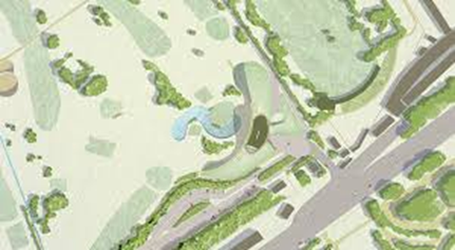
The process of reconstruction involves partial or complete relocation and rebuilding the essential physical infrastructure and shelter (house), so that vulnerability levels are reduced and families are able to get back to their feet. Reconstruction therefore paves the way for long term rehabilitation.
Rehabilitation primarily addresses the new or increased poverty levels that have emerged due to the disaster. Jobs and income generation measures in the construction sector provide an immediate and emergency boost to the local economy. This is followed by long term improvement in Agriculture management and economic opportunities, as well as IT education that seek to upgrade local economies and reduce community vulnerability in a sustainable manner.
For the process of sustainable development to take off in continuation with reconstruction, it is important that the end objective is not limited to only getting people back up to the base line levels prior to the insurgency.
The intervention over a longer term should positively improve quality of life and reduce levels of vulnerability. Concepts of improved building practices (mass housing), sanitation, mechanized agriculture, improved road networks, health care, education/IT training and security should come into play.
The importance and power of youth education cannot be underestimated. Youth empowerment through agriculture and education/IT training needs to be properly addressed.
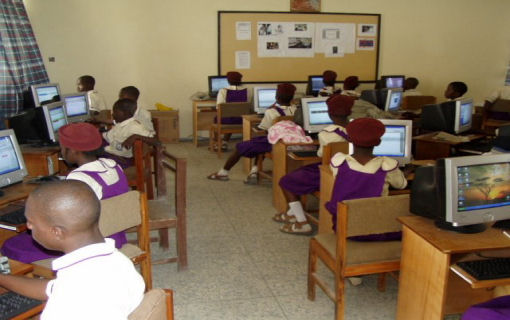
Reconstruction and rehabilitation need to be in a seam continuum with restoration efforts. The issue of correct timing and speed is however, significant. A holistic approach does not negate the need for a fast response to immediate reconstruction.
Time and again it has been seen that people will revert back to their earlier unsustainable practices very soon, if timely inputs are not made and systems that ensure long term continuity of material and skill availability are not set in place.
From Reconstruction to Rehabilitation, the reconstruction of shelter and community infrastructure, in fact, forms an important entry point for the rehabilitation process.
A reconstruction program is the first step towards restoring and
upgrading local habitat. It introduces improved systems of building, sets up basic building element supply, builds up the skills and management capacity of families, local agencies and village artisans in a restricted area and sets up local information and knowledge cipf-es.org systems. All these are to enable “better building”.
A holistic view of “Habitat” that links the process of housing with the capacity to make and exercise informed choices building
construction, habitat improvement and economic betterment is the larger goal.
Re-establishing people’s lives through rehabilitation efforts involves the following:
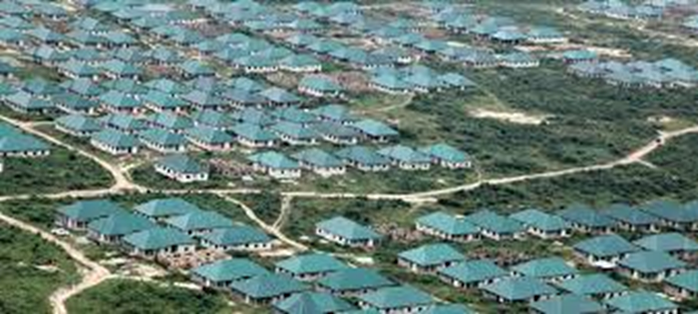
- Moving up the ladder from house to habitat to livelihood
- Local awareness creation including training for all, so that people gain control over the housing process.
- Capacity Building and linking to enterprises – Livelihood support
- Devising livelihood interventions in the farm and non-farm sectors, based on new economic opportunities to create economic surpluses (that can be directed to responsive housing)
- Creating a basis for community access to institutional housing finance
A response strategy – facilitating the creation of Sustainable
Livelihoods. An effective response strategy is to understand the need for building materials, buildings and livelihoods and catalyze the conversion of this need into demand. The demand for (sustainable) building technologies and construction practices can be provided through sustainable enterprises.
This response strategy addresses the present (immediate) need of reconstruction through local building technology-based enterprises. Reconstruction activities, if designed to include local manpower, provide the essential (short term) jobs, leading to an immediate spurt in the local economy. At the same time, building material and skill based local enterprises ensure continuous supply of quality building materials and skills. In the long term this is likely to result in a sustainable improvement in shelter conditions while also enlarging livelihood options in the region.
The reconstruction program at the outset provides a major advantage to the new enterprises. It forms the initial captive market, provides critical visibility to the new technologies and improved systems of construction and also (if systematically approached) builds up the acceptance of these new “products” in the market.
A sensitive reconstruction program will necessarily involve an accompanying process of educating the affected population on the aspects of safer construction; thus inculcating an appreciation of the improved systems. After the initial reconstruction phase, families would preferentially opt for these materials and techniques to extend their houses.
An important aspect here is that new materials and techniques should match the paying capacity of the targeted communities. A multi pronged approach is required here:
First, the selection of the improved technologies and construction systems should bear in mind the long-term affordability of the affected population. This involves correct selection of raw materials, production processes and scales of delivery. An optimum combination of large industry based materials and village enterprise based production with materials sourced from regional building centers.
Secondly, a parallel intervention in improving quality of life through enlarged livelihood options and improved land, water, resource management practices resulting in enhanced purchasing power within communities.
And, thirdly, interventions of housing and livelihood finance are
required that enable people to access available building options.
These building material production centers or the Building Materials and livelihood Banks (BMLBs) are managed by local NGOs with the production component sub-contracted to local community groups. At present, these centers supply improved building elements, technology and skills for the ongoing Rehabilitation Program.
In the long run, they are envisaged as centers for total habitat guidance to the village community on housing, sanitation, domestic energy, water storage, etc. These would be one-stop shops for all local habitat needs, including access to housing finance.
The Micro finance houses / Banks are centralized material production and service hubs but these are designed to eventually fission into down-scaled building material enterprises to become the nuclei of a large number of decentralized SME units spread throughout the region.
The technology transfer process during the core reconstruction, rehabilitation already facilitating production and based livelihoods.
This is designed to introduce new skills and capacity for improved cyclone resistant building systems within the local area in the form of enterprises. These enterprises would continue to build new houses, extend and upgrade old houses long after the immediate reconstruction interventions are over.
The project funds in the short term will lead to the construction of many infrastructures and set up building material based enterprises; and as investments in livelihoods, capacity building and information dissemination these would pay dividends by way of the following:
- Enabled, Informed Communities
- Enhanced Building Material Supply
- Improved Economies
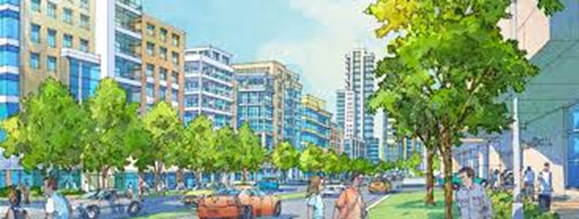
Rehabilitation, reconstruction, and development refer to measures that help restore the livelihoods, assets and production levels of emergency-affected local government areas. These measures rebuild essential infrastructure, institutions, and services and restore the means of production destroyed or made non-operational by a disaster.
Rehabilitation and reconstruction assistance is geared towards limiting the need for relief and allowing development activities to proceed towards promoting sustainable livelihoods.
- WHAT PRIMEFIELD LIMITED(PFL) DOES IN BORNO STATE AS PART OF ITS CORPORATE SOCIAL RESPONSIBILITY
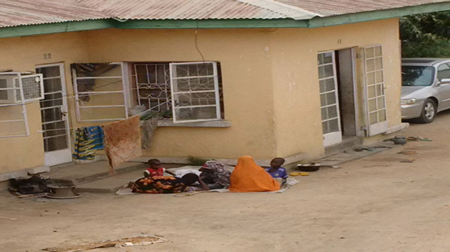
Primefield Limited (PFL) provided part of its commercial estate in Maiduguri for temporary re-settlement camp for IDPs. Also sponsoring NGOs and the disaster management experts to take stock of the overall situation of disaster-affected local government areas (LGAs) and assesses needs for rehabilitation measures and sustainable recovery of growth and development in the food, agricultural and education sectors in the medium to long-term. This assistance is aimed at reducing susceptibility to further disasters and emergencies.
Within this framework, PFL team identifies investment opportunities and formulates programmes and projects for donor funding. This includes programmes to assist resettlement and reintegration of internally displaced persons and ex-combatants.
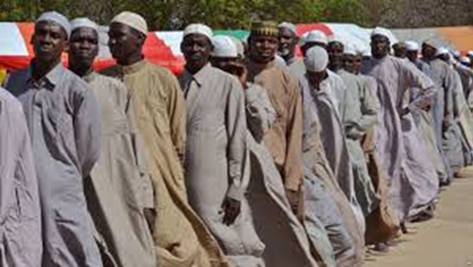
PFL plays a role in following-up immediate agricultural relief with longer-term programmes such as dams and irrigation systems, markets and crop storage facilities, etc.
2.1 BUILDING A PROGRAMME APPROACH
The objectives of PFL activities in rehabilitation, reconstruction and recovery are to assist disaster-affected LGAs to move from a need for emergency relief to sustainable development of agriculture, food security and nutritional well-being, as well as providing the youths with IT education and motivational lectures that help them to always be good citizens. This is achieved through the restoration of rural production systems, livelihoods, infrastructure, institutions and services affected by disaster.
A coherent strategy and policy framework also must be established and priority programmes and projects for medium to long-term sectoral growth and development must be identified.
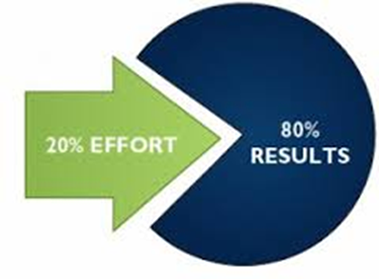
20% EFFORT FOR 80% RESULT
This may necessitate a wide range of interventions, encompassing the following: rehabilitation of the agricultural resource base; reconstruction of agricultural infrastructure; re-establishment of reliable agricultural input supply systems; re-activation of agricultural services. Including marketing, processing and distribution systems; strengthening the capacity of local institutions/agencies to identify constraints to household food security and nutrition and the groups most affected, and to design and implement concerted strategies to address these constraints; recovery – or an opportunity for reform or replacement – of state and parastatal institutions for food and agriculture; examination of technical options for future sectoral growth and development; and establishment of a strategic and policy framework for selecting and pursuing appropriate options, and of the necessary regulatory systems.
These interventions would normally need to be considered within the context of an overall rehabilitation and recovery programme rather than piecemeal approach. This is due to the scale and range of the interventions required. The programme may need to address basic issues of options, strategies and policies for the agricultural sector. It must also relate to comparable programmes under development in other sectors by other international and bilateral agencies. Indeed donor funding for individual projects may only be forthcoming, if those projects are situated clearly within a sector policy framework which addresses the whole range of issues raised by the disaster impacts on the sector.
The post-disaster situation may represent a `clean slate’ which may necessitate looking beyond a restoration of the pre-disaster situation. This is particularly the case with regard to sector strategies and policies, and state institutions and services. Such opportunities include investment in a more productive, equitable and efficient – and less disaster-prone – agricultural sector, development in livelihoods and food security. These opportunities lead to sustainable recovery. They must involve a high degree of participation based on existing community and local civil society structures and systems of authority.
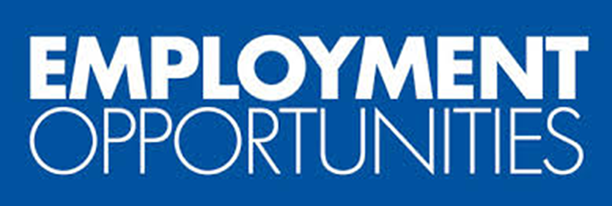
Similarly, not only must longer-term recovery and development programmes build on rehabilitation interventions, but in view of the gestation period required for putting such programmes into practice, the process of assessing options and developing strategies and policies for them must also begin early on in the rehabilitation process. Moreover, their design needs to incorporate appropriate elements of disaster prevention and preparedness, if the recovery is to be sustainable. Where the risk of emergencies is related to unresolved social tensions, whether latent or overt, this necessarily includes strategies for promoting sustainable peace.
2.2 ROLES AND RESPONSIBILITIES
2.2.1 Policy Co-ordinating Service (PCOS) PFL’s Investment Centre (PIC) and PFL’s Special Relief Operations Service (PSROS) Roles
The key units responsible for PFL’s post-emergency rehabilitation work are the Policy Co-ordinating Service (PPCS) and PFL’s Investment Centre (PIC). PFL’s Special Relief Operations Service (PSROS) has carried out critical work in creating a continuum from agricultural relief to agricultural rehabilitation report.1
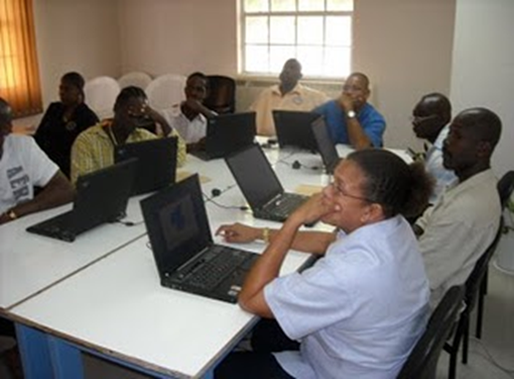
PFL Team Centre
PPCS, prepares a coherent policy and programme framework designed to ensure a smooth transition from emergency relief to rehabilitation, reconstruction, sustained recovery and development. Depending on the gravity of the situation, this may require a review of the food and agricultural, and education sectors through the fielding of an inter-disciplinary team. This review results in recommendations for short, medium and longer term strategies and policies for agricultural and educational recovery, and development which take account of post-disaster constraints and opportunities, and are in line with government priorities and policy framework.
PIC, provides assistance for the identification of specific investment opportunities through the formulation of phased and costed rehabilitation, reconstruction and recovery programmes. These programmes can be submitted to the international community, in particular to the international financial institutions (IFIs) for funding. Such assistance may be based on PPCS’s, sector review, policy and strategy work. The two areas of work, the preparation of coherent policy and programme frameworks, and the identification of investment opportunities are not always distinct. PCI, relatively well-endowed as it is in terms of availability of staff and consultants, frequently works with PPCS, in the development of a pre-formulation strategy and policy framework.
PIC’s, comparative advantage in this area is a result both of its
capacity for rapid response in the deployment of specialist expertise in the formulation of projects within any sub-sector; and its established programmes of collaboration with a wide range of financing institutions for food and agriculture. These institutions include the Centarl Bank of Nigeria (Agriculture loan), African Development Bank, World Bank (Youth empowerment fund) and United Nations Capital Development Fund, as well as Arab funds for Capital development.

The desired continuity between agricultural relief, rehabilitation and recovery programmes clearly requires close collaboration between PSROS, PPCS and PIC. This means that PPCS and PIC need to be kept fully apprised of past, current and envisaged future PSROS, projects relating to the emergency and LGAs under consideration. PSROS, must be thoroughly familiar with broader rehabilitation and recovery strategies to which its projects contribute.
2.2.2 PFL Representatives (PFLRs) and the Emergency Co-ordination Group (ECG)
The role of PFLRs in rehabilitation and reconstruction is central. The PFLR advises PPCS, and PIC, on the timing and necessity of rehabilitation and sector review activities. This is done after careful monitoring of the evolving emergency situation, the implementation of emergency relief, and after consultation with government the PFLR advises PPCS, and PIC, if and when rehabilitation and sector review activities should be initiated. Similar to other requests for technical assistance, this is channelled through the Assistant Director-General, TCD. It is also put before PFL’s in-house emergency co-ordination group (ECG) for the comments and recommendations of its members. Activities are implemented mainly by the Policy Assistance Branches or Units, but benefit from the collaboration of relevant technical divisions, PIC, and the PFLRs.
2.3 OPERATIONAL MODALITIES
2.3.1 Determining the Appropriate Time of Interventions
The best time for launching programmes for rehabilitation and recovery in LGAs affected by a complex or major emergency is a matter of judgement made in the light of political stability, institutional capacity and the scale and nature of interventions required. An orientation towards rehabilitation and development can and should be built into short-term relief operations even during the gravest of emergencies.
2.3.2 Differentiating Programmes for Emergency-affected Areas from Sector Reviews.
For disasters with predominantly localised outcomes, the priority is to assist in formulating strategies, policies and investment programmes for rehabilitation and recovery which concentrate on the needs of populations in the affected areas. Some disasters, in particular those leading to complex or major emergencies, may have consequences so widespread and serious as to necessitate a nation-wide review of the food, agriculture and education sectors. The decision as to whether a full sector review is required is one which must be reached through government, PFL and UNDP collaboration.
The latter needs to be determined in the light of the different key issues to be addressed by the Review, which will differ between LGAs / States, and may cover some combination of:
- sector economics;
- food security and nutrition;
- food crop agronomy;
- export crop production and processing;
- export livestock production and health and rangeland management;
- rural engineering (irrigation, drainage and roads);
- forestry;
- fisheries;
- agricultural services, including marketing and training;
- rural finance;
- rural sociology;
- public administration and legal matters (including land tenure);
- and youth education / IT training;
- environment.

Review of Objectives
This may include:
Policy framework for investment.
The objectives of the policy framework for investment is to mobilise private investment that supports steady economic growth and sustainability development, as well as advancement of the youths via education/IT training. It thus aims to contribute to the prosperity of state and its people as well as to support the flight against poverty. The framework proposes a set of questions for the governments to consider in the fields identified:-
- the state of natural resources (lake chad basin, arable land, livestock, solid minerals, oil and gas;
- main production systems;
- the impact of the disaster/emergency on the sector, including:rural livelihoods, food security and nutrition;
- output trends;
- Transportation
- migration;
- agricultural infrastructure;
- the status of institutions,
- and emergency relief operations completed or in progress, including agricultural relief, and their impact;
- the need for rehabilitation measures to restore the sector to its pre-disaster status to the extent that this is desirable, or the content, progress or impact of a separately designed rehabilitation programme as appropriate;
- construction of major roads linking border towns of Chad, Cameroun and Niger Republic.
- a review of the potential for and constraints to sectoral development,
as critically important for improving the quality of a state environment for investment, including by small enterprises and foreign investors. Its core purpose is to encourage policy makers to ask appropriate questions about their economy institutions and their policy settings in order to identify their priorities, to develop an effective set of policies and to evaluate progress
The commercial policy needs to be further strengthened or developed with reference to five key principles for businesses under government ownership:
Clear objectives – providing management of government businesses with clear commercial objectives (i.e. removing or isolating social and regulatory objectives, which may be in conflict with the commercial objective) managerial authority – ensuring key internal operating decisions are made by managers with strong incentive to maximise the value of the firm (rather than through externally-imposed controls) performance monitoring – subjecting government businesses to rigorous, independent monitoring and assessment of financial performance rewards and sanctions – establishing managerial rewards and sanctions related to performance competitive neutrality – removing the special advantages and disadvantages that apply due to government ownership and preventing the abuse of any market power.
Meeting the first four principles above constitutes “commercialisation” of a government entity. The fifth principle is concerned with promoting competition (including through market reorganisation), and is an essential step prior to “corporatisation” of a government entity as a state owned corporation.
